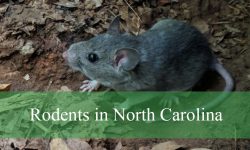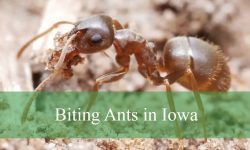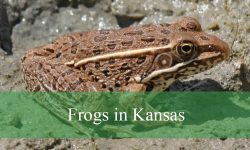Woodpeckers are some of the most fascinating and easily recognizable birds in Tennessee. With their distinctive drumming sounds and striking plumage, these birds bring vibrant life to forests, parks, and suburban backyards. Tennessee’s diverse habitats support a variety of woodpecker species, each with unique behaviors and appearances.
Learning to identify woodpeckers by their colors, calls, and habits can greatly enhance any outdoor experience. From the tiny Downy Woodpecker to the impressive Pileated Woodpecker, Tennessee offers a rich variety of these lively birds.
This guide explores nine common woodpecker species found across Tennessee. Along with detailed identification tips and interesting facts, helpful pictures make spotting these birds easier and more enjoyable.
Common Woodpeckers Found in Tennessee
Downy Woodpecker (Picoides pubescens)
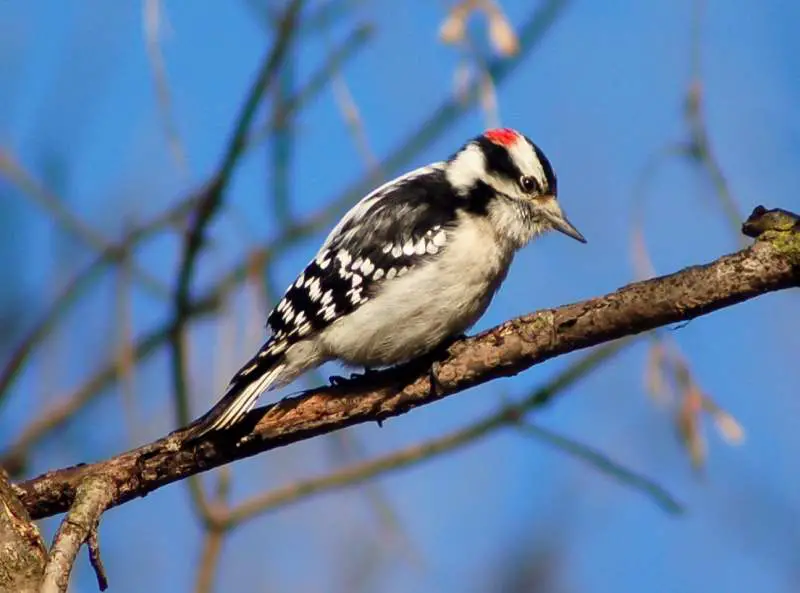
The Downy Woodpecker is the smallest woodpecker species found in Tennessee, measuring about 5.5 to 6.7 inches in length with a wingspan of approximately 10 to 12 inches. Despite its small size, it is a very active and bold bird, often seen moving rapidly along tree trunks and branches. Its compact body and short bill distinguish it from other woodpeckers in the region. The Downy Woodpecker’s feathers are predominantly black and white, with a white underside and black wings featuring white spots.
In terms of identification, the Downy Woodpecker has a striking black-and-white striped face pattern. Males possess a small red patch on the back of their heads, while females lack this marking. The bird’s short, chisel-like bill is about one-third the length of its head, which is shorter than similar species like the Hairy Woodpecker. Its drumming is soft and rapid, usually used to communicate and establish territory.
Behaviorally, the Downy Woodpecker feeds primarily on insects such as beetle larvae and ants, which it finds by pecking into bark crevices. It is also known to consume seeds and berries, especially during winter months when insects are scarce. This species is a frequent visitor to backyard feeders, particularly those offering suet. It is active year-round and can be quite vocal, making sharp “pik” calls.
Habitat-wise, the Downy Woodpecker thrives in a variety of environments across Tennessee, including deciduous forests, mixed woodlands, orchards, and suburban areas. It prefers trees with soft bark such as willows and maples but adapts well to urban parks and gardens. This versatility allows it to be one of the most commonly observed woodpeckers throughout the state.
Red-bellied Woodpecker (Melanerpes carolinus)

The Red-bellied Woodpecker is a medium-sized woodpecker native to Tennessee, with an average length of 9 to 10 inches and a wingspan reaching up to 16 inches. Its distinctive black-and-white barred back and wings contrast with a pale face and a subtle reddish tinge on the belly, which is often difficult to see. The most noticeable feature is its bright red head; males have red extending from the bill to the nape, while females show red only on the nape and crown.
Identifying this species is relatively straightforward due to its bold coloration and pattern. The red on the head is vivid and glossy, and the barred black and white wings create a striking appearance in flight or perched on tree trunks. Its bill is strong and straight, well-adapted for chiseling wood and probing crevices. The Red-bellied Woodpecker’s call is a loud rolling “churr” sound, often heard echoing through forests and suburban areas.
In terms of behavior, Red-bellied Woodpeckers are versatile feeders, consuming insects, nuts, fruits, and occasionally eggs or nestlings of other birds. They are known to cache food, storing nuts and seeds in tree crevices for later use. These woodpeckers are highly territorial, often seen defending their feeding and nesting sites vigorously. Their drumming is slower and more deliberate compared to smaller woodpeckers.
The species inhabits a wide range of wooded habitats in Tennessee, including deciduous and mixed forests, parks, and suburban neighborhoods. They favor mature trees for nesting and foraging, particularly oaks and hickories. Their adaptability to human-altered environments means they are commonly seen at backyard feeders, especially during winter.
Northern Flicker (Colaptes auratus)
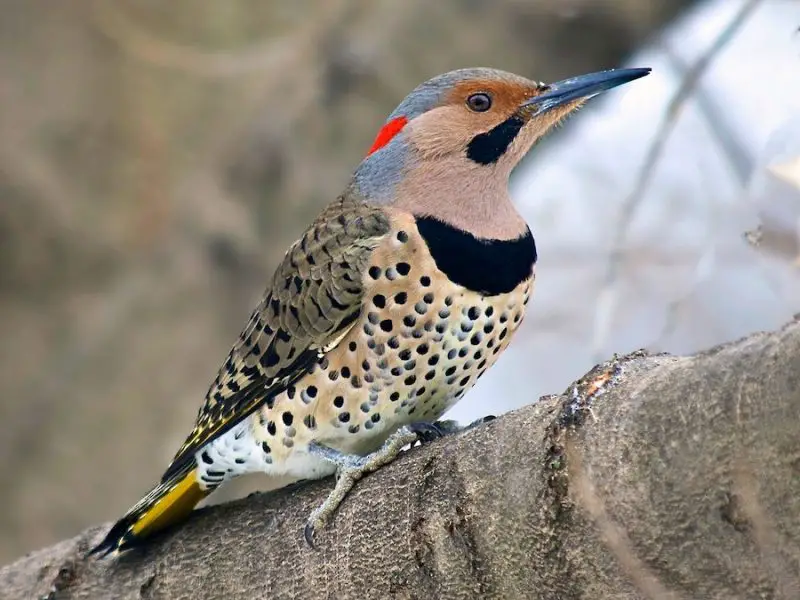
The Northern Flicker is one of Tennessee’s larger woodpeckers, measuring approximately 11 to 12 inches long with a wingspan of about 16 to 20 inches. Its plumage is a warm brown with heavy black spotting on the chest and belly, and bold black bars on the back. A distinctive black crescent-shaped marking adorns the upper chest. Depending on the regional variant, the bird exhibits a red or yellow shaft on its wing and tail feathers, with the eastern Tennessee population showing red shafts.
Identifying the Northern Flicker involves noting its unique behavior and coloration. Unlike many woodpeckers, Flickers spend a significant amount of time foraging on the ground for ants and beetles. Its face has a grayish hue with a red patch on the nape for males. The long, slightly curved bill is adapted for probing soil and bark. In flight, the white rump patch and bright wing feather shafts are easily noticeable.
Behaviorally, Northern Flickers are less focused on tree trunks than other woodpeckers and often seen digging in lawns, parks, and forest floors. They nest in cavities they excavate in dead or decaying trees. Flickers are also known for their loud, repetitive calls and a distinctive “wicka-wicka” drumming pattern. They are migratory in northern parts of their range but tend to be year-round residents in Tennessee.
The habitat of the Northern Flicker in Tennessee includes open woodlands, forest edges, parks, and suburban areas with ample open ground. They prefer habitats with scattered trees and open soil for foraging. This species is fairly common throughout the state and easily observed due to its distinctive foraging style.
Pileated Woodpecker (Dryocopus pileatus)
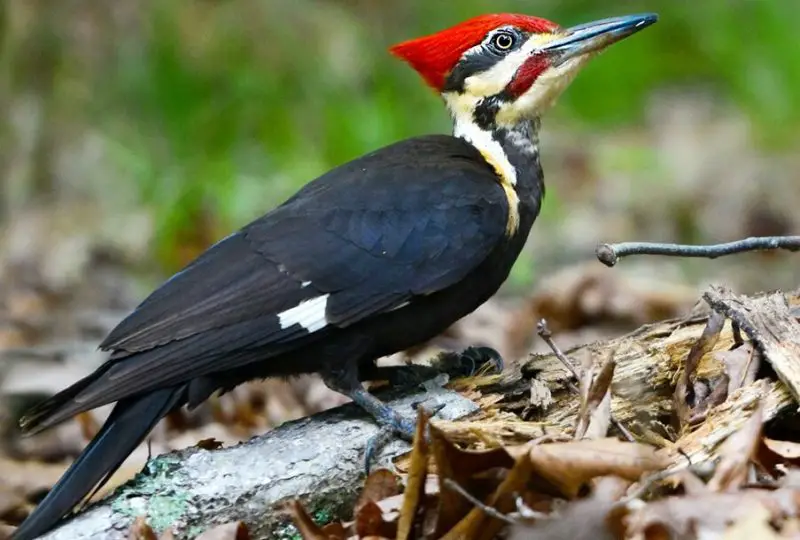
The Pileated Woodpecker is the largest woodpecker species found in Tennessee, measuring around 16 to 19 inches in length with a wingspan of up to 30 inches. Its striking appearance features predominantly black plumage with bold white stripes running down the neck and a vivid red crest that makes it unmistakable. The massive chisel-shaped bill is pale and powerful, ideal for excavating large holes in trees.
Identification of the Pileated Woodpecker is aided by its impressive size and loud, ringing call which echoes through forested areas. The red crest is prominent in both males and females, although males often have a red stripe on the cheek. When flying, the white underwing feathers contrast with the dark body, creating a dramatic visual. Its drumming is slower but more forceful than smaller woodpeckers.
In behavior, the Pileated Woodpecker is known for its ability to excavate large rectangular holes in dead trees to find carpenter ants and wood-boring beetles. It plays an important role in forest ecosystems by creating cavities used by many other species for nesting. These woodpeckers are generally solitary or found in pairs and maintain large territories that they defend aggressively.
Pileated Woodpeckers prefer mature forests in Tennessee, particularly those with large, standing dead trees or fallen logs. They are most commonly found in deciduous and mixed hardwood forests, but can occasionally be seen in heavily wooded suburban areas. Their presence is often a sign of a healthy, older forest ecosystem.
Hairy Woodpecker (Leuconotopicus villosus)
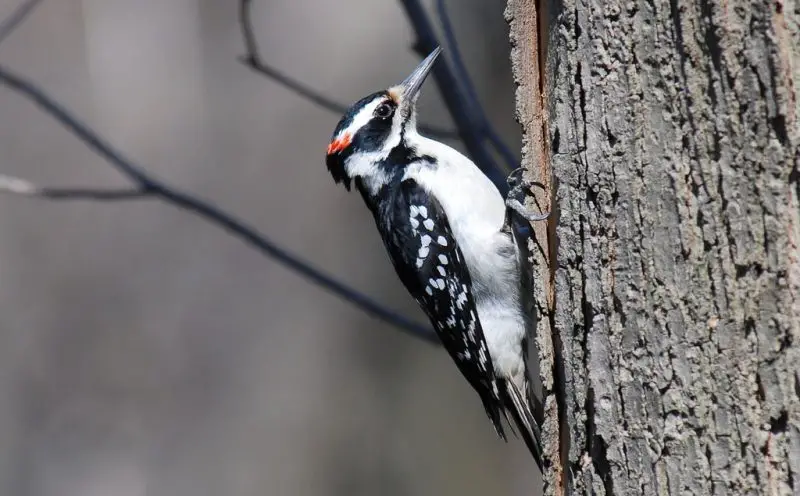
The Hairy Woodpecker resembles the Downy Woodpecker in coloration but is noticeably larger, measuring about 9 to 10 inches long with a wingspan of 16 to 18 inches. Its plumage is black and white, featuring a white belly and black wings with white spots. Males have a red patch on the back of the head, similar to the Downy, but its longer, sturdier bill helps distinguish it.
Identification can be tricky due to its similarity to the Downy Woodpecker; however, the Hairy Woodpecker’s bill is almost as long as its head, whereas the Downy’s is much shorter. The Hairy Woodpecker’s drumming is louder and more forceful, often heard echoing through forested areas. It exhibits a more deliberate and steady pecking style when foraging.
Behaviorally, the Hairy Woodpecker feeds mainly on insects found beneath the bark of trees. It is an efficient forager, often climbing vertically along trunks and branches to find food. Unlike the Downy Woodpecker, it is less likely to visit backyard feeders but is more associated with mature forests and woodlots. It is usually seen alone or in pairs.
The Hairy Woodpecker inhabits a wide range of wooded environments in Tennessee, including deciduous and mixed forests, as well as suburban woodlots. It prefers mature trees for nesting and feeding, especially oaks and maples. This species plays a key role in controlling forest insect populations and maintaining ecological balance.
Red-headed Woodpecker (Melanerpes erythrocephalus)
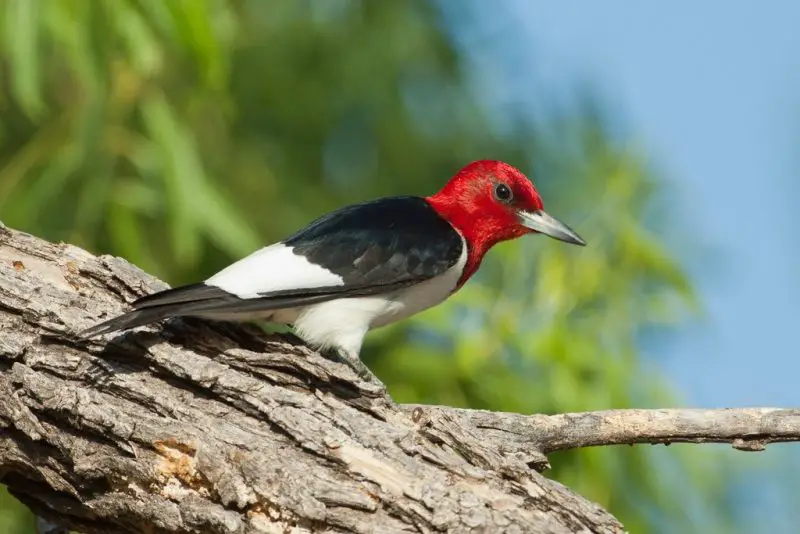
The Red-headed Woodpecker is a striking medium-sized bird, measuring about 7.5 to 9 inches in length with a wingspan ranging from 13 to 16 inches. Its most notable feature is the entirely bright red head, neck, and throat, which contrast sharply with its white body and black back and wings. This bold coloration makes it one of the most easily recognizable woodpeckers in Tennessee.
Identification is straightforward due to its vivid red head and clean white underparts. The wings are glossy black with large white patches that are visible in flight. Unlike many woodpeckers, the Red-headed Woodpecker often perches openly on branches and fences, making it easier to spot. Its call is a series of loud, clear “churr” or “kik” sounds, often repeated rapidly.
Behaviorally, this species is quite versatile. It feeds on a mix of insects, fruits, nuts, and even small vertebrates. It has a habit of storing food in tree crevices and cracks, similar to the Red-bellied Woodpecker. The Red-headed Woodpecker nests in cavities, often excavated in dead trees or utility poles. It is territorial and defends its nesting site vigorously.
In Tennessee, the Red-headed Woodpecker prefers open woodlands, forest edges, and areas with scattered dead trees suitable for nesting. It is also found near rivers, farms, and even suburban parks. Due to habitat loss, its numbers have declined in some regions, but it remains a memorable species for birdwatchers.
Yellow-bellied Sapsucker (Sphyrapicus varius)
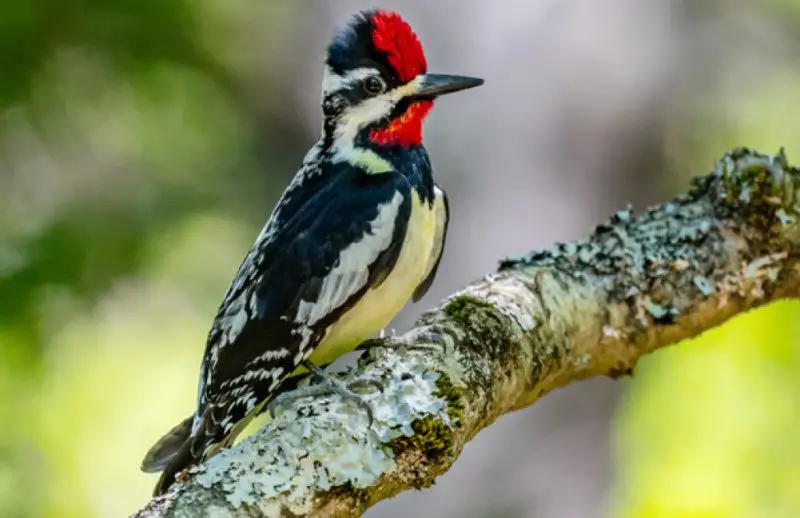
The Yellow-bellied Sapsucker is a medium-sized woodpecker, about 7.5 to 9.1 inches long, with a wingspan of around 13 to 16 inches. Its plumage includes a black-and-white barred back, a pale yellow belly, and a striking red forehead and throat patch in males, with females showing a less vivid red throat. This species is easily identified by the neat rows of small holes it drills into tree bark to access sap.
In appearance, the Yellow-bellied Sapsucker shows a distinctive pattern on its face, with white stripes above and below the eyes. The red throat and forehead provide a splash of color, while the back’s barring offers camouflage among tree branches. Its bill is strong but shorter compared to larger woodpeckers, adapted for drilling sap wells.
Behaviorally, this woodpecker is known for its unique feeding strategy of tapping shallow holes in trees, called sap wells, which it visits regularly to drink sap and catch insects attracted to the sap. It prefers birch, maple, and pine trees for sap extraction. The Yellow-bellied Sapsucker is migratory in Tennessee, typically passing through in spring and fall during its journey between northern breeding grounds and southern wintering areas.
Its habitat in Tennessee includes mixed woodlands and forests, especially those with a variety of tree species suitable for sap drilling. Though it is less common in the state compared to other woodpeckers, its distinctive feeding marks on trees make its presence evident to keen observers.
Red-cockaded Woodpecker (Leuconotopicus borealis)
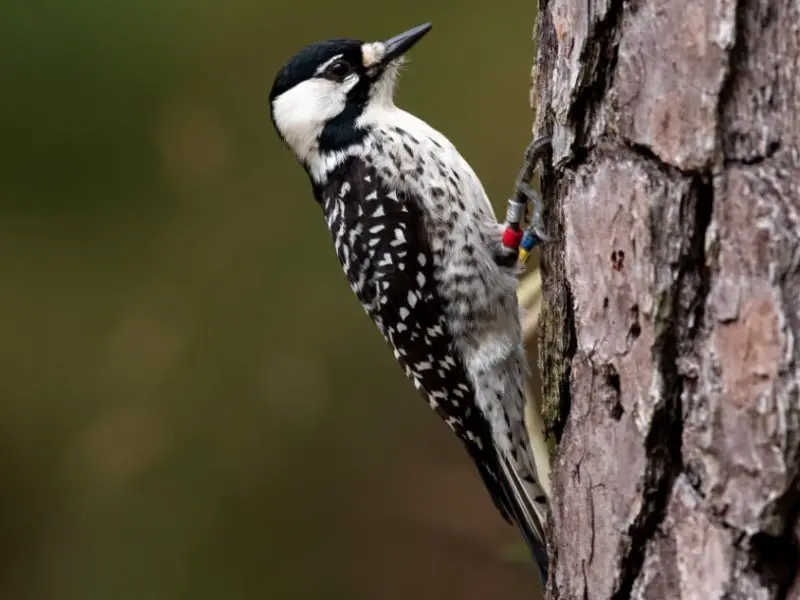
The Red-cockaded Woodpecker is a small to medium-sized woodpecker, roughly 7 to 7.5 inches long with a wingspan of about 12 to 14 inches. This species has a predominantly black and white plumage, with a subtle but distinctive small red streak or “cockade” behind the eyes of males. Unlike many woodpeckers, it lacks a bright red crest but makes up for it with its elegant black and white barred back.
Identification of the Red-cockaded Woodpecker can be challenging due to its resemblance to other small woodpeckers. The key distinguishing feature is the small red streak behind the male’s eye, which is often hard to see without close observation. Its call consists of a series of sharp “wicka” notes used for communication within family groups.
This species exhibits highly specialized behavior and habitat preferences. It excavates cavities exclusively in living pine trees, preferring old-growth or mature pine forests with sparse understory vegetation. The Red-cockaded Woodpecker lives in cooperative breeding groups and is highly territorial, defending its nesting trees vigorously. It feeds on ants, beetles, and other insects found in pine bark.
In Tennessee, the Red-cockaded Woodpecker is considered endangered and is found primarily in scattered pockets of mature pine forests in the southern part of the state. Conservation efforts focus on habitat preservation and controlled burns to maintain the open pine woodlands this species requires.
Acorn Woodpecker (Melanerpes formicivorus)
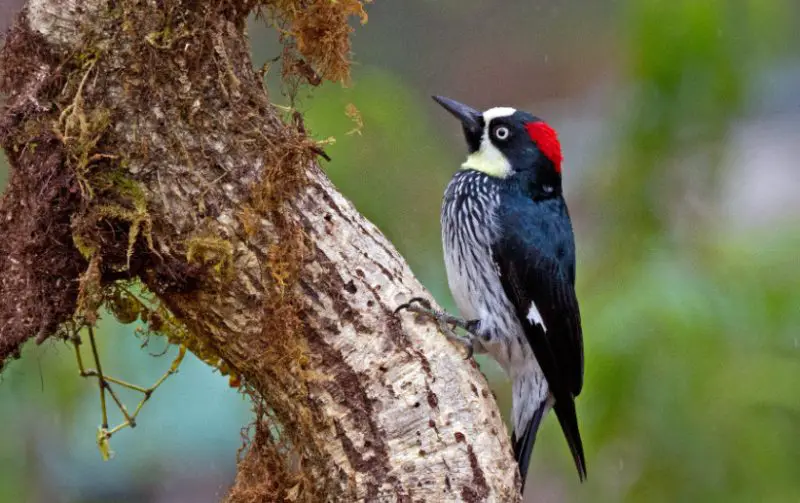
The Acorn Woodpecker is a medium-sized bird, about 7.5 to 9 inches long, with a wingspan reaching up to 15 inches. It is recognizable by its bold black and white body, white face, and a bright red cap. This species is well known for its unique behavior of storing acorns in granary trees, where they drill hundreds of holes to stash their food.
In terms of identification, the Acorn Woodpecker’s black wings and back are contrasted by white patches on the face and belly. The red cap extends from the forehead to the nape, making it easy to spot. Its call is a loud, harsh “waka-waka” sound, which often carries across the woodland where it lives.
Behaviorally, this woodpecker is highly social and lives in family groups that cooperatively maintain granary trees full of stored acorns. These storage trees serve as both food supplies and territorial markers. The Acorn Woodpecker feeds primarily on acorns but will also eat insects, sap, and fruit. It nests in tree cavities it excavates or finds.
Though more common in the western and southwestern United States, Acorn Woodpeckers are occasionally observed in Tennessee, particularly in mixed woodlands with oak trees. Their presence is notable for their acorn granaries, which can persist for years and attract attention from other wildlife.
Frequently Asked Questions About Woodpeckers in Tennessee
What types of woodpeckers are most common in Tennessee?
The most common woodpeckers in Tennessee include the Downy Woodpecker, Red-bellied Woodpecker, Northern Flicker, Pileated Woodpecker, and Hairy Woodpecker. These species are frequently found across various habitats such as forests, suburban areas, and parks.
How can I identify a Downy Woodpecker compared to a Hairy Woodpecker?
Although similar in black and white coloring, the Downy Woodpecker is smaller with a shorter bill that is about one-third the length of its head. The Hairy Woodpecker is larger with a longer, sturdier bill nearly the length of its head. Their drumming and calls also differ, with the Hairy Woodpecker producing louder sounds.
Do woodpeckers damage trees in Tennessee?
Woodpeckers typically target dead or dying trees to find insects, which can benefit forest health by controlling pest populations. While they may occasionally peck on healthy trees, serious damage is uncommon. However, some species like the Yellow-bellied Sapsucker create sap wells that can stress trees if abundant.
Are woodpeckers in Tennessee migratory?
Most woodpecker species in Tennessee are year-round residents. However, species like the Yellow-bellied Sapsucker migrate seasonally, passing through Tennessee during spring and fall. Other woodpeckers may move locally in response to food availability.
How can I attract woodpeckers to my backyard in Tennessee?
To attract woodpeckers, provide food sources such as suet, sunflower seeds, and nuts. Installing suet feeders and maintaining mature trees or snags will encourage natural foraging. Avoid using pesticides to ensure insects are available as a natural food source.
What habitats do woodpeckers prefer in Tennessee?
Woodpeckers in Tennessee inhabit a variety of environments including deciduous and mixed forests, open woodlands, suburban parks, and gardens. Many species prefer mature trees or dead wood for nesting and foraging.



